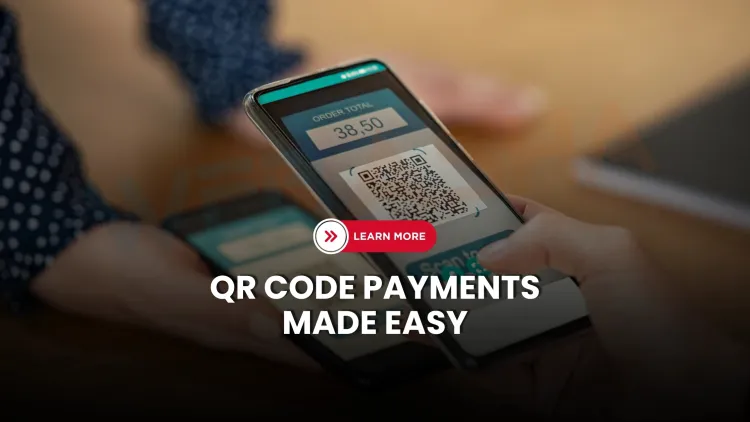What is 'Scan to Pay' and how does it work step-by-step?
Scan to Pay is a digital payment method where users scan a QR code using a smartphone to instantly pay a merchant. This system uses QR code technology, a payment gateway, and UPI or wallet-based apps like Google Pay, PhonePe, or Paytm. Once the code is scanned, the transaction is processed in real time, securely debiting the amount from the user’s bank account and crediting the merchant’s account. It’s fast, secure, and widely used for contactless payments in India and globally.

Table of Contents
- What is "Scan to Pay"?
- How Does "Scan to Pay" Work Step-by-Step?
- Behind the Scenes: What Happens When You Scan a QR Code?
- Key Technologies Involved in Scan to Pay
- Why Is "Scan to Pay" So Popular?
- Use Cases of Scan to Pay in 2025
- Is Scan to Pay Secure?
- Common Scan to Pay Apps in India
- Conclusion
What is "Scan to Pay"?
Scan to Pay is a contactless payment method that lets you pay by simply scanning a QR code using your smartphone. It’s fast, secure, and requires no physical cash or card swipe. Commonly used in shops, restaurants, and online deliveries, this method has changed how we make daily payments.
In this blog, you’ll learn how Scan to Pay works, how the technology functions behind the scenes, and why it's becoming the go-to method for digital payments in 2025.
How Does "Scan to Pay" Work Step-by-Step?
Here’s a simple breakdown of how Scan to Pay works—from the moment you place an order to payment confirmation.
Step 1: Merchant Generates the Bill
-
The seller enters the amount in their POS (Point of Sale) system.
-
Example: ₹750 is entered, and an Order ID like
ORDER7845is created.
Step 2: Payment Gateway Generates a QR Code
-
The POS system sends the amount and Order ID to a Payment Gateway like Paytm, Razorpay, Google Pay, or Stripe.
-
The payment gateway generates a unique QR code for that transaction.
Step 3: Customer Scans the QR Code
-
You open your mobile payment app (Google Pay, PhonePe, Paytm, etc.).
-
You scan the QR code using the in-app scanner.
Step 4: Payment App Shows Transaction Details
-
Your app fetches the merchant name and bill amount.
-
You review and confirm the payment.
Step 5: Payment is Completed
-
You click “Pay.”
-
The amount is deducted from your bank account or digital wallet.
-
The merchant receives instant confirmation.
Behind the Scenes: What Happens When You Scan a QR Code?
| Action | What Happens Internally |
|---|---|
| QR Code Scan | App reads encoded payment URL |
| Payment Request | Info sent securely to the payment server |
| Validation | Gateway checks order details & merchant |
| Authentication | Customer confirms using UPI PIN or biometric |
| Payment Processing | Fund transfer is initiated in real time |
| Confirmation | Payment success message is sent to merchant |
Key Technologies Involved in Scan to Pay
QR Code (Quick Response Code)
-
A square barcode that contains encoded payment data.
-
Scanned via camera in wallet apps.
Payment Gateway
-
Secure middle layer between customer and bank.
-
Validates and authorizes transactions.
UPI / Wallet Integration
-
Many apps use UPI (Unified Payments Interface).
-
Wallets like Paytm, Google Pay, PhonePe, and BHIM allow instant transfers.
Tokenization & Encryption
-
Card details are never exposed.
-
Payment data is encrypted end-to-end.
Why Is "Scan to Pay" So Popular?
-
✅ Contactless: No need to touch card readers or cash.
-
✅ Instant: Payments complete within seconds.
-
✅ Secure: Uses encrypted payment tokens.
-
✅ Widely Accepted: From small shops to large retailers.
Use Cases of Scan to Pay in 2025
| Industry | Use Case |
|---|---|
| Retail | In-store shopping payments |
| Restaurants | Bill payments at table |
| Transportation | Parking and fuel stations |
| Government | Utility bills, traffic fines |
| E-commerce | Cashless delivery payments |
Is Scan to Pay Secure?
Yes, Scan to Pay is designed with multiple layers of security:
-
QR codes are transaction-specific and expire quickly.
-
No card number is shared during the process.
-
Requires PIN, fingerprint, or Face ID for payment confirmation.
-
Payments are conducted over encrypted HTTPS channels.
Common Scan to Pay Apps in India
-
Google Pay
-
PhonePe
-
Paytm
-
BHIM UPI
-
Amazon Pay
These apps support UPI-based QR payments and are widely used across India.
Conclusion
Scan to Pay is revolutionizing the way we handle transactions in 2025. With a fast, secure, and user-friendly approach, it has become a default choice for millions. Whether you’re buying groceries or paying your electricity bill, just scan, pay, and go—no cash, no swiping, no fuss.














![Top 10 Ethical Hackers in the World [2025]](https://www.webasha.com/blog/uploads/images/202408/image_100x75_66c2f983c207b.webp)








